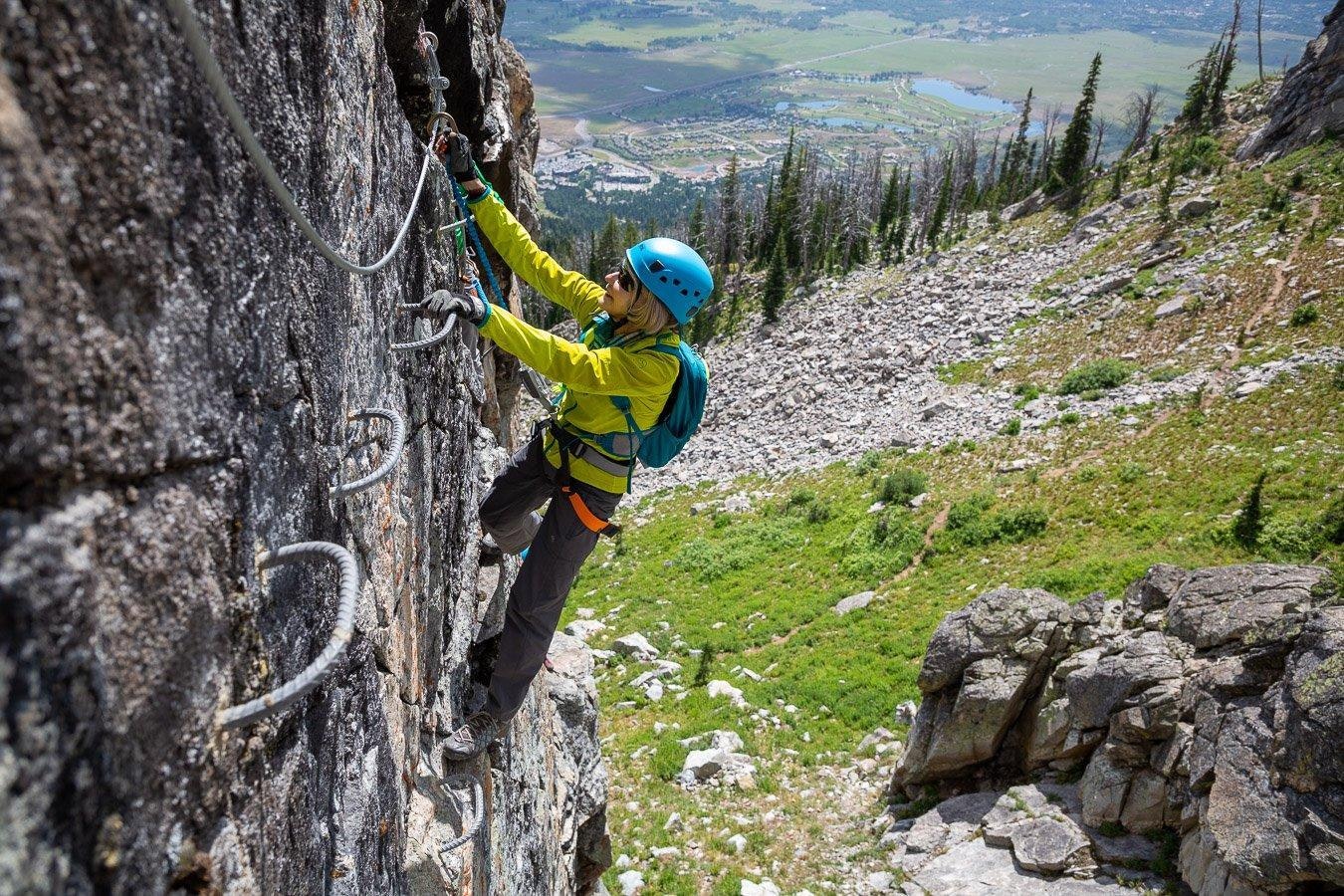The proposed addition of what has been described as a “giant ladder” to help visitors climb a steep cliff in Sinks Canyon near Lander has many of the city’s residents divided.
Sen. Cale Case, R-Lander, is one of the people fighting against the proposed “via ferrata,” a cable and rung system that allows users to climb steep rock faces, while resident and author Sam Lightner, Jr. is one of its most vocal supporter.
Case told Cowboy State Daily that nearly 200 signs protesting the proposed via ferrata — which means “iron path” — have popped up all over town in recent weeks.
“Everybody is opposed to the development of Sinks Canyon,” Case told Cowboy State Daily on Monday. “They love Sinks Canyon. They just don’t want to see it overdeveloped.”
Sinks Canyon State Park is a somewhat small but heavily used park in Fremont County that sees several hundred thousand visitations annually. Though operated by Wyoming State Parks and Cultural Resources, the Wyoming Game and Fish Department owns the majority of the park’s 585 acres.
Case noted that much of the issue isn’t with the via ferrata itself, but the proposed location, a north-facing cliff near the mouth of the canyon that is home to peregrine falcon nests.
Peregrine falcons saw a major decline in their population during the 20th century across the United States and species was listed as endangered in 1970.
However, the population began to bounce back in the 1980s and 1990s due to various conservation efforts. According to WyoFile, some opponents of the via ferrata cite the negative impact on the birds as one of the reasons to fight it.
Case said that other animals regularly pass through that canyon area as well, so the via ferrata and a proposed visitor center would have a negative impact on them.
“Ignoring the importance of this narrow section [of the canyon] to the movement of animals, State Parks intends to plug the critical part with a new visitor center building and associated facilities,” Case wrote in an “alternative master plan” about the via ferrata. “At the same time, activity related to improved access for the via ferrata will disturb the constricted paths on the other side of the river, the only place animals are able to move without close human contact.”
WyoFile reported that Wyoming State Parks initiated a master plan process in 2019. Prior to that, park improvements were guided by a plan from 1975.
When the plan was released in October 2020 following more than a year of meetings, surveys, small group interviews and more, it laid out a vision of a park with better parking and more trails, a larger visitors center, more educational opportunities and augmented recreation opportunities.
Among the proposals was the via ferrata. The idea for its construction was proposed by a group of Lander residents as a way to draw visitors and boost the town’s tourist economy.
According to a column Lightner wrote for Cowboy State Daily in April, an independent study conducted on a via ferrata built in Ouray, Colorado, concluded Lander could expect $1 million in added revenue due to increased visitation by people taking advantage of the climbing system.
Lightner sent Cowboy State Daily a new proposal for the via ferrata on Monday which suggested that it be built on the Gunky Buttress area, a sandstone wall across from the Sawmill campground on the north side of canyon’s main entry road.
The via ferrata proponents proposed that $2,000 of the donated funds for the iron path be donated to Sinks Canyon for an interpretive site at the petroglyphs at the far north end of the buttress, which would “help make the area a focus of attention in the park and enhance interest in the legacy the local tribes have in the park.”
They also suggested that a trail that continues up to a high point in the canyon would be “excellent” for an interpretive site.
“One of the things we like about the via ferrata on the northwest facing wall is that from its highpoint…you can see many of the peaks of the central Wind River Range. A trail above the Gunky Buttress location could reach a similar view point (roughly the same elevation),” the proponents wrote. “Though it would not afford great views of the central Winds, it would reveal the peaks of the southern Winds and much of the canyon could be seen. An interpretive site explaining the view and perhaps the geology and geography could be built here with a trail that links back down into the canyon and parking.”
In return for this compromise, the group asked the Sinks Canyon Wild and Friends of Sinks Canyon (two groups opposing the via ferrata) to endorse the project and asked that Sinks Canyon Wild contribute another $2,000 to the interpretive sites.
“The Sinks Canyon Via Ferrata will likely make a few Yellowstone bound tourists stop to try out what we in Fremont County already know – Lander is a wonderful place with lots of recreation,” Lightner wrote in his April column. “Perhaps they will take in the family-friendly via ferrata, then have dinner in town, stay in a hotel, have breakfast, shop, etc. They may even find out that we are a growing center for mountain biking, or that partaking of the via ferrata is a good first step in learning to climb, which they can do in Lander. This will be done using a natural resource we have and in a way that does not harm the wildlife.”





